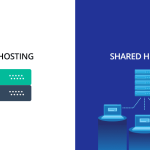When it comes to optimizing performance in modern applications, particularly those with high traffic, you might have heard the term Redis. Redis is a powerful in-memory data structure store that has become a cornerstone for caching, real-time analytics, and distributed systems. In this blog, we'll explore what Redis is, why it's so valuable, and some common use cases that demonstrate its effectiveness.
What is Redis?
Redis (Remote Dictionary Server) is an open-source, in-memory key-value data store that can function as a database, cache, and message broker. It was created in 2009 by Salvatore Sanfilippo and has since become a popular choice for applications that require fast, reliable data access.
Unlike traditional databases that store data on disk, Redis stores data in memory (RAM), making data retrieval extremely fast. It supports a variety of data structures, including strings, hashes, lists, sets, and sorted sets, which makes it versatile for different types of applications.
Redis is known for its performance, simplicity, and robustness, with additional features like replication, persistence, and clustering.
Why is Redis Useful?
Redis provides unique advantages that make it a go-to choice for performance-critical applications. Here are several reasons why Redis is widely used and highly effective:
1. Blazing Fast Performance
One of Redis's most defining features is its speed. Because it stores data in memory rather than on disk, data can be accessed in microseconds. This makes Redis an excellent choice for use cases that demand real-time performance, such as gaming leaderboards, live chat applications, or stock price tickers.
2. Versatile Data Structures
Redis isn't just a simple key-value store like some other in-memory databases. It supports a variety of rich data types, including:
- Strings for simple key-value pairs.
- Lists for ordered collections.
- Sets for unordered collections of unique elements.
- Sorted Sets for ordered collections with scores.
- Hashes for storing objects with multiple fields.
These diverse data types allow Redis to handle complex data storage and access patterns, which makes it more flexible than many other caching solutions.
3. Caching Capabilities
Redis is frequently used as a caching layer between an application and a traditional database (like MySQL or PostgreSQL). By storing frequently accessed data in Redis, applications can reduce the load on their primary database and significantly improve response times. For example, Redis can cache the results of database queries, user sessions, or API responses.
By storing data in RAM, Redis provides quick read/write access to this cached data, improving the overall performance of the application, particularly when handling high traffic.
4. Persistence Options
Although Redis is primarily an in-memory data store, it offers two mechanisms for persisting data:
- RDB (Redis Database Backup): Snapshots of the dataset are taken periodically and stored on disk.
- AOF (Append-Only File): Every write operation is logged, and the log is replayed to recover the data after a restart.
This ensures that even in-memory data can be recovered after a crash or system reboot, making Redis suitable for use as both a cache and a more durable database.
5. Replication and High Availability
Redis supports master-slave replication, where data is copied from the master node to one or more slave nodes. This feature provides redundancy and ensures high availability in case the master node fails. Redis Cluster can also be used to horizontally scale Redis across multiple nodes, making it fault-tolerant and capable of handling large datasets.
6. Pub/Sub Messaging System
In addition to storing data, Redis supports the Publish/Subscribe (Pub/Sub) messaging paradigm. This allows Redis to act as a message broker where one service can publish messages to a "channel," and multiple other services can subscribe to that channel to receive updates. This is particularly useful for building real-time systems, like notifications, live chat applications, or event-driven architectures.
7. Atomic Operations and Transactions
Redis operations are atomic, meaning they are completed in one step, which ensures data integrity, even in highly concurrent environments. Redis also supports transactions using the MULTI, EXEC, and WATCH commands, allowing multiple commands to be executed in sequence as a single atomic unit.
8. Memory Efficiency
Redis is designed to use memory efficiently, allowing it to handle large datasets without using an excessive amount of RAM. Additionally, Redis has built-in mechanisms, such as Eviction Policies, which allow you to manage how memory is used. When Redis reaches its memory limit, these policies determine how old or least-used data is removed to make space for new data, ensuring optimal performance even with limited resources.
Use Cases of Redis
Redis is incredibly versatile and used across various industries and applications. Here are some popular use cases where Redis shines:
1. Caching
One of the most common use cases for Redis is caching. Redis can store frequently accessed data (like web pages, query results, or user sessions) in memory, allowing applications to retrieve that data much faster than if they were querying a disk-based database.
2. Real-Time Analytics
Because of its speed, Redis is perfect for handling real-time data analysis, such as tracking website visits, monitoring sensor data, or counting likes and comments in social media applications.
3. Leaderboards and Counters
For gaming applications, Redis is often used to manage real-time leaderboards. It can quickly sort and rank player scores, providing instant updates to users.
4. Message Queues and Pub/Sub
Redis’s Pub/Sub capabilities make it ideal for building real-time messaging systems. Whether it’s notifications, chat systems, or live data feeds, Redis can efficiently handle high-throughput messaging between distributed systems.
5. Session Management
Many web applications use Redis to manage user sessions. Redis can store session data, such as login status and user preferences, with lightning-fast access, ensuring smooth user experience for high-traffic sites.
6. Rate Limiting
Redis can also be used for rate limiting API requests. By keeping track of the number of requests a user has made within a specific time frame, Redis helps prevent abuse of system resources.
Conclusion
Redis is an essential tool in modern web development due to its high speed, versatility, and reliability. Whether you're looking to improve application performance through caching, implement real-time analytics, or handle massive amounts of data with ease, Redis provides the features necessary to meet those needs. Its support for multiple data structures, persistence, replication, and high availability makes it a valuable asset for building scalable, efficient applications.
If you're developing a system that requires fast data access, distributed messaging, or large-scale caching, Redis might be the perfect tool to take your project to the next level.







